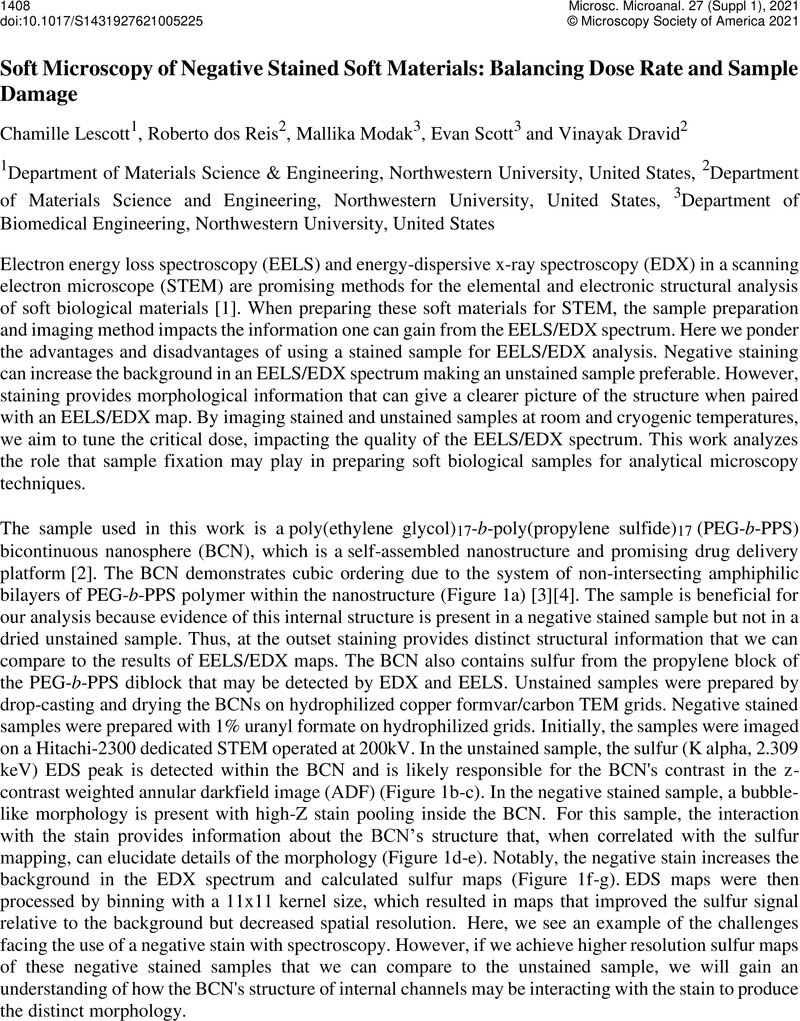No CrossRef data available.
Article contents
Soft Microscopy of Negative Stained Soft Materials: Balancing Dose Rate and Sample Damage
Published online by Cambridge University Press: 30 July 2021
Abstract
An abstract is not available for this content so a preview has been provided. As you have access to this content, a full PDF is available via the ‘Save PDF’ action button.

- Type
- To Fix or Not To Fix? A Question for Biological Samples
- Information
- Copyright
- Copyright © The Author(s), 2021. Published by Cambridge University Press on behalf of the Microscopy Society of America
References
This work was primarily supported by Air Force Office of Scientific Research (AFSOR) FA9550-17-1-0348 (subproject for Reconfigurable Matter from Programmable Atom Equivalents) and C-ABN(AFRL) FA8650-15-2-5518 (Statistics and Dynamics of Soft Biological Structures and Hybrid Soft-Hard Assemblies). Additional funding from ARO/MURI W911NF1810200 (Dravid Subproject for Stimuli-Responsive Control of Protein-Based Molecular Biology). The research of Evan A Scott is supported by the National Science Foundation (CAREER-1453576), the National Institutes of Health Director's New Innovator Award (NHLBI 1DP2HL132390-01), and the National Institute of Allergy and Infectious Disease (NIAID 5R01AI145345-02). This work made use of the BioCryo facility of Northwestern University's NUANCE Center, which has received support from the SHyNE Resource (NSF ECCS-2025633), the IIN, and Northwestern's MRSEC program (NSF DMR-1720139).Google Scholar


